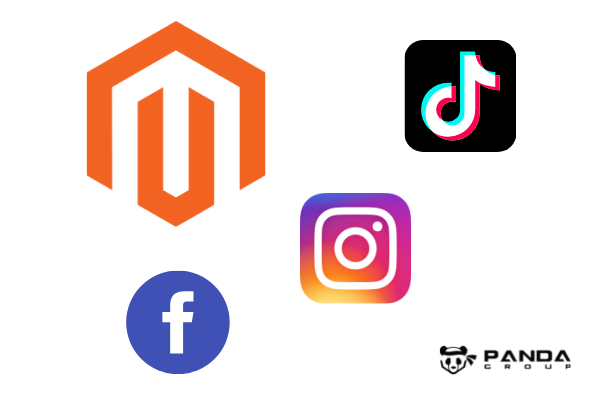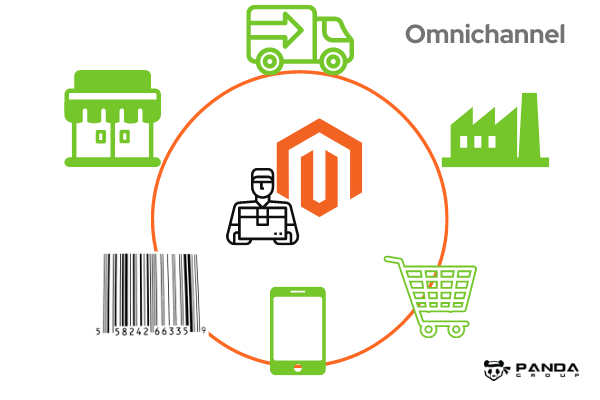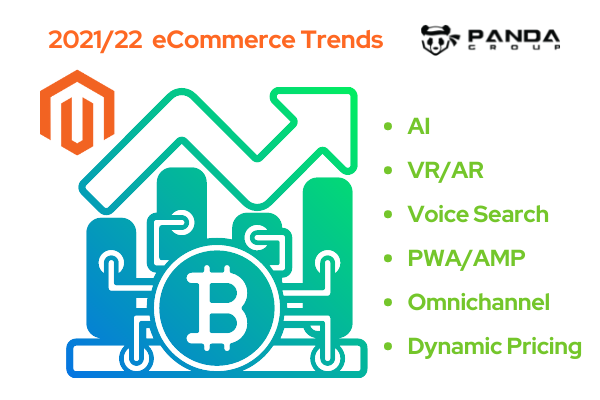The e-commerce industry is constantly evolving and new trends are emerging all the time. In this article, we will look at e-commerce trends that emerged in 2021 and predict what changes we might see next year.
Let’s take a look at:
- e-commerce strategy and technology trends for 2021,
- e-business marketing techniques of the future 2022.
The winner is an e-commerce platform that delivers an excellent user experience
Covid has influenced customers behaviour in the e-commerce market. Not only the way of purchasing has changed because of pandemic restrictions, but also clients expectations from merchants.
The price is not the only deciding factor. Over 50% of customers appreciate the positive experience more than the low price. This knowledge is a challenge for marketers.
Consumers are willing to pay more but expect to get an extra treat in exchange. Shopping is not only satisfying individual needs but also about delivering a unique customer experience.
The merchant can now define new features and benefits for their business, as well as create a unique e-commerce strategy to reach the best demographic audience possible.
Global eCommerce business growth
At the end of 2021, eCommerce is valued at around $4.9 trillion vs. $4.2 trillion in 2020 and is expected to grow to $5.7 trillion in 2022 and $6.5 trillion in 2023 (Source: Statista). The growing trend of digital shopping is visible and as long as the internet exists irreversible and supported by changes in consumer behaviour as already stated. eCommerce is the future of e-business.
No matter if you run a digital store, or you possess offline brick and mortar points of sales, your shift towards eCommerce sales is inevitable.
The eCommerce industry is growing at a fast pace, and these are just some of the numbers that prove that online shopping is inevitable for every B2B and B2C business. It does not matter if you sell your products on Amazon or Alibaba – what matter is how well you do it to get an edge over the competition.
Mobile commerce increase in online shopping
Customers are shopping online on more than one device, including desktops, laptops, tablets and smartphones. This is leading to changes in eCommerce strategies that must accommodate mobile customers, who account for 50% or more of all eCommerce traffic.
eCommerce companies must provide unique and personalized experiences that cater to the needs and preferences of their customers across all devices, platforms and channels they may use.
Mobile centric marketing
Mobile e-commerce growth to $3.56 trillion in 2021 vs $2.91 trillion in 2020 and is still growing like the whole e-commerce business.
The Magento e-commerce platform is working on the technology part – developing new features, integrations and functionalities that will further increase the mobile market share in 2022.

PWA or AMP eCommerce trends for mobile devices
PWA Progressive Web Apps and AMP Accelerated Mobile Pages will continue to grow significantly in the e-commerce industry this year, with an estimated 50% increase from 2019. They allow loading pages faster and when they are previously browsed even without internet connection.
Since people are using mobile devices to shop more than ever before, make sure your store is mobile responsive.
Web page responsiveness
In the beginning, you can start by running the Google Mobile-Friendly Test and checking the responsiveness of the store as well as its loading performance.
eCommerce websites need to be designed to load faster in a shorter period of time, even with a slow internet connection. Make sure your product pages are optimized – they need to be well-arranged and easy to navigate.
Website optimization
Use automated and manual testing to give your customers an exceptional, personalized online shopping experience.
Your products need to be viewed and zoomed well on mobile devices and the payment process should be as easy as possible to avoid confusing mobile shoppers.
Social Media Platforms as e-commerce channels
The role of social media is becoming significant in introducing direct selling opportunities. According to Social Media Index, already 37% of social media users search for products and brands on social media.
They are not only marketing tools allowing to expand the audience and target ads to individual preferences and interests. Merchants can sell their products and services through social media.

Social media platforms allow communication directly with the consumer. Ecommerce practices show retail sales are more personalized, which is expected by online shoppers who actually search for h products on social media, but are also willing to accomplish their purchase directly from channels like Instagram or Facebook.
Omnichannel
To perceive a unified customers experience through all the marketing channels the brands need e-commerce platforms allowing them to manage inventories, price and stock data in real-time no matter if the shopping is taking place on desktop, mobile, showroom or brick and mortar store.
One-time buyer
Data shows that 75% of consumers do not purchase at the same shop again (Source: Forbes, 2021). The one-time buyer is a challenge in 2021 and building loyalty and relationships based on an excellent and consistent shopping process may be a key to retaining clients.
Omnichannel helps build reliable touchpoints between clients and brands to attract more customers and turn them into loyal customers.
Various delivery options
Ecommerce clients appreciate a variety of search, selection, ordering and delivery options and want to compose their customized set of services tailored to their preferences, such as online purchase, in-store pickup or in-store purchase and choice of home delivery directly to the consumer.
More about Magento Omnichannel features read on our blog article:
⇨ Why Magento 2 is the Best Platform for Omnichannel eCommerce?

New payment options in the eCommerce industry
Payment methods are one of the most important factors for an eCommerce business. Clients will not purchase from you if you do not give them the options they expect.
Debit and credit cards are followed by digital wallets (like Google Pay, Samsung or Apple Pay, and PayPal). Cryptocurrencies, which are still in the minority, may become more popular in the coming years. Only some retailers regularly offer this payment method, many of them now consider this solution.
Cryptocurrency advantages for eCommerce businesses
For example, Bitcoin, the first cryptocurrency existing since 2008 may have some benefits for eCommerce businesses. Enlarging payment methods is potentially a cutting edge in some markets and let to take advantage of the competition in the very stuffed market.
Introducing this payment method gives you access to a growing community of advanced technology investors who can become your customers. Cryptocurrency transactions are faster, safer and cheaper as they have no fees.
Keep your eyes open for new payment options. Apart from Bitcoin, there are some other trustworthy cryptocurrencies that may be useful in your online store to boost total retail sales.
Dynamic Pricing
Dynamic pricing makes life easier for online merchants by allowing them to set different prices for groups of shoppers based on their location, language and currency. This feature is useful when inventory varies over time or if you sell your products in several markets at once.
Over 30% of eCommerce businesses already use dynamic pricing, while another 30% are evaluating the process to implement it in the future (Source: Ecommerce-Trends-2021-SearchNode).
It’s important to keep up with the latest market trends and listen closely for any information that will help your company stay competitive. If you’re not already doing so, use dynamic pricing software to get the best strategy for your eCommerce business.
Simple Checkout process
A complicated checkout process is one of the most common reasons for cart abandonment, it affects conversion critically. eCommerce brands need to reduce the amount of information required for checkout and give customers a simple shopping experience.
One page eCommerce checkouts are more popular among e-stores as they allow clients to finish their order in one step only, also some eCommerce platforms like Magento offer this feature by default. It’s an effective way of reducing cart abandonment.
Clients want eCommerce brands to make their online shopping experience as easy and fast as possible. Therefore, eCommerce trends show that more e-stores will be using one-page checkouts in the future.
Personalized customer experience – technology supporting eCommerce
To build lasting customer relationships and loyalty, you will need technology to manage and personalize the online shopping experience
In 2021, we can observe the development of the following areas:
Marketing automation for eCommerce businesses
Marketing automation is used by f most eCommerce merchants. Most of them plan to improve and develop marketing automation in the future. eCommerce businesses use marketing automation as a tool for marketing communication and offer personalization to send e-mails and other promotional materials.

Artificial Intelligence (AI) supports eCommerce business owners
The future of eCommerce lies in personalized customer experiences, and retailers are investing in Artificial Intelligence to do just that.
Online sellers will spend $7.3 billion on AI by 2022 according to an estimate Financeonline.com. The report Ecommerce-Trends-2021-SearchNode showed what areas will be supported by artificial intelligence (AI) in the coming future. The respondents’ top picks for AI assistance are personalization 70%, site searches 54%, forecasting 52%, marketing 43%. The next most popular area that they see potential is pricing at 38%!
Virtual Reality VR & Augmented Reality AR
Virtual and augmented reality VR and AR are still waiting to be widely implemented in online stores. The technology is considered to increase conversions and decrease the return rate.
Around 10% of respondents of Ecommerce-Trends-2021-SearchNode report use virtual reality in online stores. 53% will not use it in the nearest future and 18% are still evaluating.

Voice Commerce
The situation is similar with Voice Commerce which is evaluated by 24% of respondents from the same report. Around 20% are using this or plan to use it promptly, and 42% will not implement voice commerce in the next year.
Voice Assistants
However, according to Business Insider 20% of online shoppers declare to use voice devices at least once a week. Voice assistants are the most popular in the US and the biggest market shares in US voice assistants have Amazon, Google, Sonos, Apple.
The number of voice shoppers is expected to increase by 55% in 2022. What are voice shoppers buying? The most popular purchases include household items, food, and toys.
Voice search
It’s worth considering that the voice marketing channel can be a tricky one while there is no visual incentive and you rely on the client’s product descriptions. Nevertheless, voice shopping will be increasing together with voice search and will change the customer experience in eCommerce sales.
You still have time to optimize your site content for ranking in voice search. A good idea is also to add voice navigation to your store on desktop and mobile. Not forgetting about simple checkout based on voice commands.
Focus on green consumerism
The practice of green consumerism refers to the act of people buying products that are sustainable or responsible, often looking for ways they can help protect natural resources.
The eco-trend is growing constantly and environment-sensitive consumers paying attention to details such as how products are produced, packaging, resources protection and reuse.
Already, more than 60% of consumers declare to be willing to buy from sustainable brands. This percentage is expected to increase in the coming years.
Digitally Native Brands
Digital native brands that don’t exist offline are a new phenomenon. They have a strong eCommerce focus, and their success is based on social media presence.
Native digital brands can be defined as e-commerce companies whose online visibility is driven primarily by whisper marketing rather than paid advertising or traditional eCommerce channels such as Google Shopping or email marketing.
Examples of native Digital Brands: Dyson, Casper, Canada Goose, Tesla.
Customers experience, not customer service
They mainly focus on building human relations with clients and treating them like friends. They care much about sustainability and social responsibility, control sourcing and distribution in the production process following the trend of green consumerism.
They are natural trustworthy partners, involving clients as friends in their stories. They use content to show the differences between them and their competitors.
Conclusion
There are several eCommerce trends you should take into account for the upcoming 2022 year.
Not all trends apply to your individual business. We predict the future will be a delight for those who adjust to customers expectations and deliver unique customer experiences, using technology and resources wisely to support mobile commerce and voice shopping with diverse delivery and payment options.
If you need to analyze what technology will support your online store in the most efficient way contact us and take benefit from our expert knowledge of the Magento e-commerce platform.
Magento e-commerce platform follows e-commerce trends
Magento is one of the most popular e-commerce platforms on which to run an online store. If you’re looking for a way to save time and money let’s talk!
We have over 7 years of experience with the Magento e-commerce platform in our corner – we know what’s up when it comes to optimizing your business’ technology needs.


 (No Ratings Yet)
(No Ratings Yet)